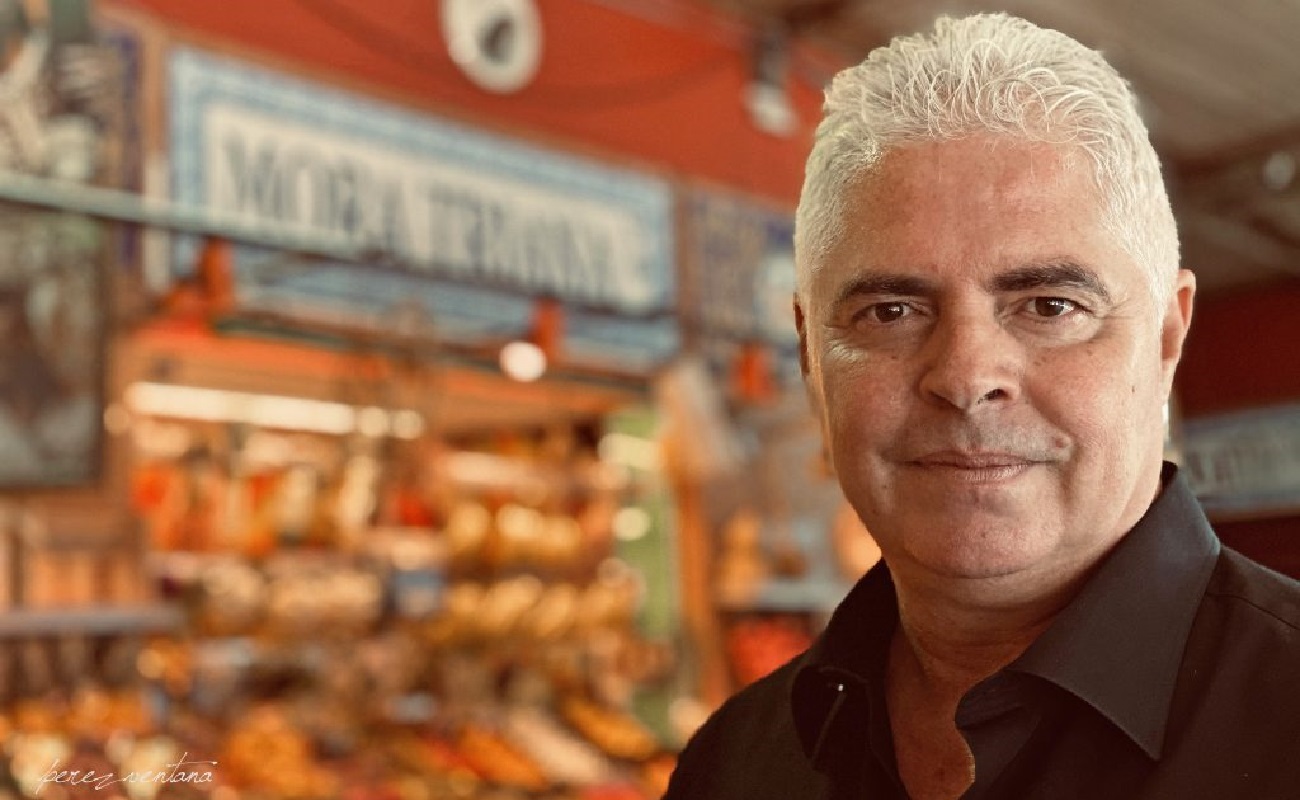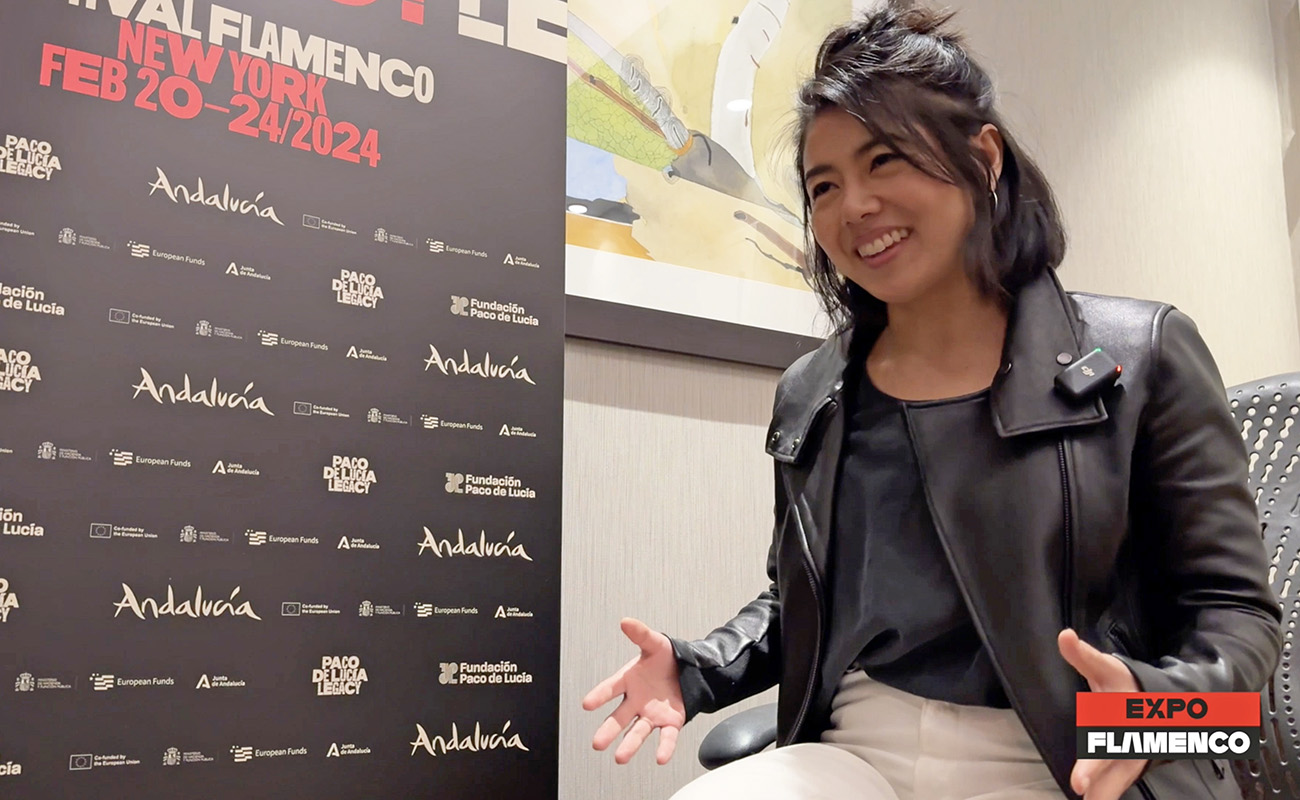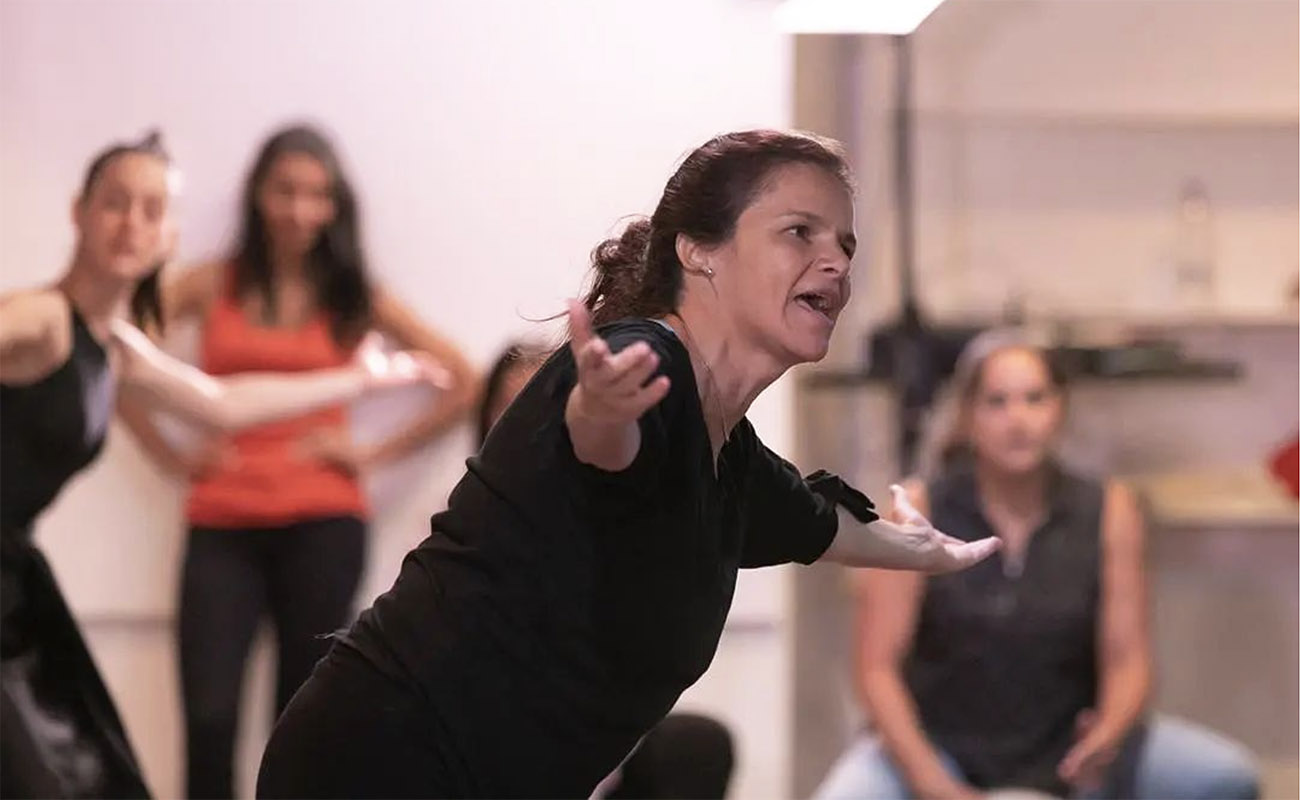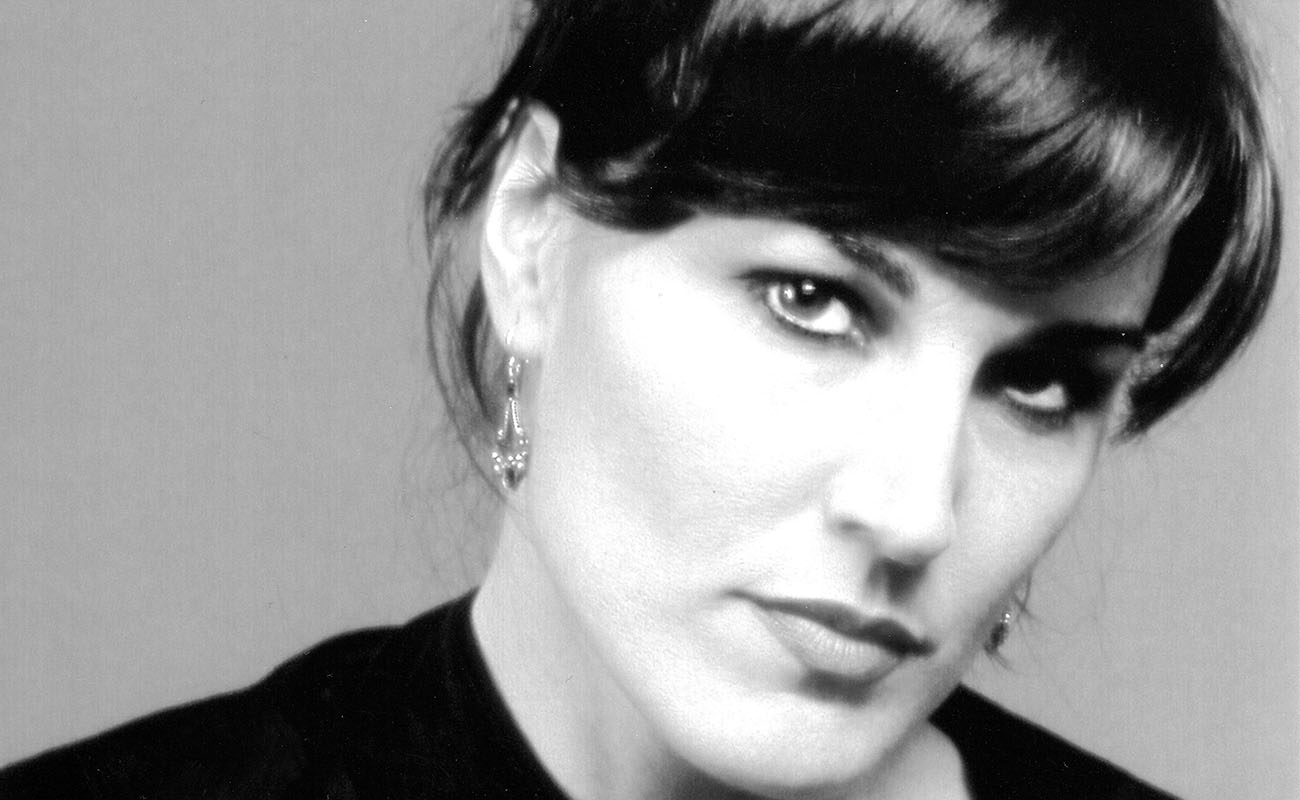Luis Perez: «Flamenco is all about feelings, about communicating emotions»
Luis Perez, flamenco chronicler and critic, shares his perspectives about flamenco's present and future in an interview originally published in Spanish by CIENXCIEN Flamenco

1- Who is Luis Pérez?
At fifty-two, I am still trying to get to know myself. Without much success, I am afraid. I am a simple family man, easy to get along with. I like to be surrounded by good people, but I am very picky with my friends. I do not have many friends, but the ones I have are very good ones. I am intense and temperamental, and I try to be passionate about everything I do. Regarding flamenco, I consider myself a big aficionado. And more than that.
2- How did you arrive at the world of flamenco?
Flamenco was always present in my life, rocking me in the cradle and in the tapes that came from my uncle Antonio’s house to my small Sanyo cassette player. I remember a cassette jewel box featuring a very serious man with an imposing wide-brimmed hat holding a golden key in his hand.
Yet, at the time I preferred the flamenco-ish songs by Juanito Valderrama, Antonio Molina and Emilio el Moro. I remember my mom singing those lyrics about the bull in love with the moon, as she hung the clothes to dry. The coplas by Manolo Escobar and Rocío Jurado, and the sevillanas of Romeros de la Puebla and the Toronjo brothers.
My father, who was from Santa María, was a good aficionado. He really liked Lebrijano, his close friend. Pansequito too, naturally, who also lived in Santa María. I remember telling my him, “dad, please turn that music off…! So much ay, ay, ay, I can’t stand it!”. Who knew…
In my teens, since I always liked to sing along, I started to like sevillanas, fandangos and alegrías. Little by little. I checked out the Andalusian rock of Triana, Silvio and Pata Negra. From there I got to know Camarón, who opened the door to the infinite abyss of cante jondo.
3- What are your thoughts about flamenco nowadays?
Until recently, I felt optimistic, comparing to some of my colleagues and friend aficionados who are more prone to doom and gloom, you know, who believe that flamenco is helplessly dying and it’s all messed up. The same clichés that have existed around flamenco from the day it was born.
However, lately I have been starting to lose my confidence in flamenco’s future. I am not sure if it is because I am getting old, or because I have realized the big lie we have been told. Let me explain.
There is a basic fraud embedded in today’s flamenco DNA. It started with the declaration by the Junta de Andalucía in the article 68.1 of the Andalusian Statutes, that they are «the sole authority in matters of knowledge, preservation, research, training and promotion of flamenco as unique element of Andalusian heritage».
And it became forever cemented with the trap of UNESCO’s designation of flamenco as Intangible Cultural Heritage. We got all excited. Finally, flamenco was going to be honored and dignified as it deserved.
Yet, we were all fooled. Why? Because from then on, they believed they had the right to control this art as they wanted. The politicians hand out the money without any explanation as to how or where it is spent.
They pick the artists that get to work, and those who refuse to follow their guidelines are out. The worst part is that many of those in charge do not even like flamenco. Authentic flamenco, the one you and I like. On the other hand, flamenco is no longer Andalusian heritage.
They say that flamenco is now universal, they love that word. Because it allows them to strip away everything they do not like about flamenco, starting with its very essence. They discard its authenticity, its mystery, its difficulty. All of what makes flamenco an art form of the minorities.
And they fill it with fusion, with instruments and forms that mitigate its harshness, sweetening it to make it more palatable for the general public. But that is not the worst part. The worst is that any artist who wants to work must stick to their guidelines.
The shows of baile are the most affected by this cancer. Contemporary dance. Conceptual baile. Unnecessary mega-shows with a minimal dose of traditional baile. Lots of stuffing, trying to please everyone.
That approach is followed by the world’s most important flamenco festivals, from Seville’s Bienal de Flamenco to Amsterdam’s Flamenco Biennale and Flamenco Festival New York.
They say that flamenco is now universal, they love that word. Because it allows them to strip away everything they do not like about flamenco, starting with its very essence. They discard its authenticity, its mystery, its difficulty. All of what makes flamenco an art form of the minorities.
4- What do you like about the peñas flamencas?
Peñas are the home of flamenco, its sanctuary. They are the guardians of the flame. They are the mother that flamenco aficionados turn to when they need love. When artists perform in a peña flamenca, they feel a greater responsibility than usual, precisely because they know that the audience is well versed in flamenco and will not be fooled.
5- What don’t you like about peñas flamencas?
Their fragility. The fact that many of them have to walk on a tightrope, without knowing if they will have to shut down the next year. There is also their complete dependence on government subsidies. A new business model should be found to ensure their financial independence.
6- Is criticism a positive thing in our art? It is hard to understand negative criticism, isn’t it?
Negative criticisms are hard to grasp, either by the artist or by their fans. They are useless, unless the goal is to create controversy and going viral in the social networks. If negative criticism is unavoidable, it must be accompanied by a constructive message.
Besides, we must be careful. We cannot judge with the same standards a young, novice artist and a renowned, established master. I think that all of us who work as a flamenco critic should try to find ways to reinvent the forms and the concept of flamenco critic.
The traditional flamenco critic, sometimes merciless and sometimes sycophantic, is domed to extinction. Primarily because no one cares about their personal opinions. Personally, I prefer to call my articles “chronicles” instead of “critics”.
Flamenco is all about feelings, about communicating emotions. I try to make my readers imagining they are sitting next to me and watching that performance they were unable to attend. There is also the important aspect of educating the audience and looking after the aficionados, definitely.
7- What are your thoughts about the 2020 Bienal de Sevilla?
I do not like it. I do not like how it has been directed or managed, or its lack of transparency. I also dislike its spirit, which I think includes all the evils I mentioned above. I do not even like its raison d’etre. They messed up a great brand.
Seville’s Bienal de Flamenco could have been the best showcase for traditional flamenco, which is what Seville’s City Council and the Junta de Andalucía should promote: that flamenco that is becoming extinct, the undeniable culture of the Andalusian people.
New flamenco does not need any support from public institutions, because it sells itself just fine. So, you asked, and I answered.
8- What is your perspective about Spanish flamenco aficionados?
Not Good, Marco. The main problem with cante jondo is the lack of aficionados. It is not that flamenco is an art of the minorities, as it always was. Even in Seville people look down on flamenco, as something worthless, meant for the riffraff.
In Jerez, the young aficionados only care about bulerías. Triana ceased to be an essential center of flamenco a long time ago. And outside of Spain they perform non-authentic flamenco, because it makes money.
9- There will ever be flamenco union?
I hope so, because it is sorely needed.
10- Which current artists would you like to highlight? And what about those flamenco artists that have been forgotten and are still among us?
Fortunately, we have very good artists who keep the flame alive. Of all ages. When I make these lists, someone always gets offended, because I miss to mention several essential artists. I will only name one of each category: Juanito Villar, Manuela Carrasco and Rafael Riqueni.
Full name: Luis M. Pérez Sánchez.
Born: Madrid, June 19th, 1968.
Hometown: Seville
Original interview by Marco, published in Spanish by CIENXCIEN Flamenco on July, 2nd, 2020. Photo: perezventana




